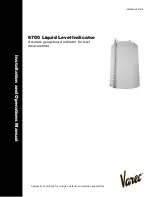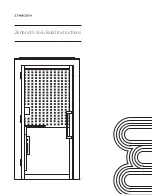
END OF INSTALLATION
INITIATION OF SAMPLE FLOW TO
THE ANALYZER
Note: SCFH = standard cubic feet per hour
1.
Turn the SAMPLE FLOW METERING VALVE to the full clockwise position to the Off Position.
Do not overtighten it! Turn until finger tight only.
Bypass Gas Flow Rate
This can be adjusted using the BYPASS FLOW METERING VALVE Knob. To increase the Flow Rate,
turn the Knob counterclockwise. To decrease, turn clockwise.
Sample Gas Flow Rate
This can be adjusted using the SAMPLE FLOW METERING VALVE Knob. To increase the Flow Rate,
turn the Knob counterclockwise. To decrease, clockwise.
2.
Turn the BYPASS FLOW METERING VALVE to the full clockwise position to the Off Position.
Do not overtighten it! Turn until finger tight only.
3.
Apply a gas pressure of approximately 20 psig (1.4 bar) and leak test check all fittings back to
the Sample Tap while looking for tiny bubbles (We recommend using SNOOP
®
).
DO NOT
USE the spray bottle as this technique produces bubbles and does not achieve the best results.
4.
Once the installation has passed the Leak Test, slowly turn the SAMPLE FLOW METERING
VALVE Knob counterclockwise until the Flow Meter reads approximately 1.0 SCFH (0.5 Lpm).
STEPS
5.
Now open the BYPASS METERING VALVE by turning the Knob counterclockwise ½ a turn or
temporarily using an external flowmeter, adjust the bypass flow for 1.0 SCFH. Then, remove
the flowmeter and reattach the bypass tubing.
Note: AMI has chosen this technique since all bypass flow meters have a tendency to plug quickly
due to the volume of liquids and particulates going through the bypass path.
Sample Flow Metering Valve
Bypass Flow Metering Valve
Flow Meter
(indicates flow rate in SCFH)
WARNING:
DO NOT OVERTIGHTEN
THE METERING VALVES or
you will damage them. They
are not ON/OFF VALVES!
19
















































